7 mind-blowing cave temples in India to visit
7 Mind-Blowing Cave Temples in India to Visit

India, a land where spirituality merges seamlessly with artistry, hides within its rocky heart some of the most fascinating architectural wonders — the cave temples. Carved out of solid rock faces, cliffs, and mountains, these temples are not merely religious sanctuaries but living museums that narrate tales of faith, devotion, and creativity spanning thousands of years. Each one stands as a timeless testament to India’s mastery in rock-cut architecture, its rich cultural diversity, and its enduring spiritual essence.
Here’s a journey through seven mind-blowing cave temples in India — where art meets divinity, and every chisel mark tells a sacred story.
1. Ellora Caves, Maharashtra – The Epitome of Rock-Cut Brilliance
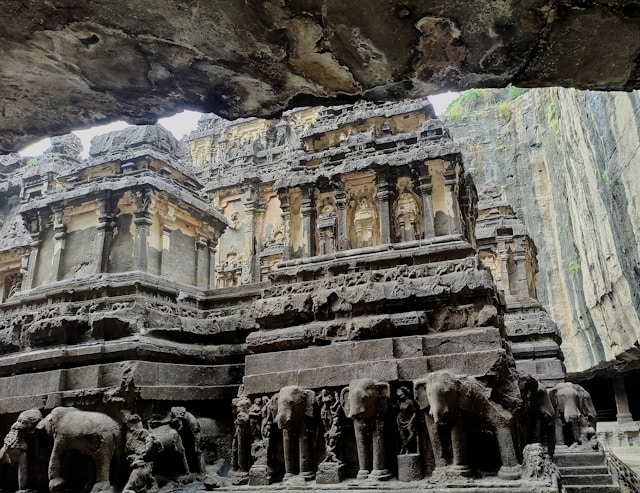
Location: Aurangabad District, Maharashtra
Best Time to Visit: November to March
Highlights: Kailasa Temple, intricate sculptures, multi-religious heritage
The Ellora Caves are one of the grandest architectural marvels in the world and a UNESCO World Heritage Site. Carved between the 6th and 10th centuries CE, this complex is home to 34 caves, representing Hinduism, Buddhism, and Jainism, coexisting in stunning harmony.
The most awe-inspiring of all is Cave 16, known as the Kailasa Temple, dedicated to Lord Shiva. What makes it truly mind-blowing is that it was hewn out of a single massive rock, from top to bottom — a feat unmatched even by modern engineering standards. The temple is twice the size of the Parthenon in Athens and richly adorned with sculptures depicting scenes from the Ramayana and Mahabharata.
Visitors are often left speechless by the intricate carvings, towering pillars, and the sheer scale of craftsmanship. Every inch of this masterpiece radiates devotion, artistry, and imagination, making Ellora a must-visit for anyone passionate about India’s ancient heritage.
6 Thrilling Wildlife Experience in India’s Jungle
2. Ajanta Caves, Maharashtra – The Soul of Buddhist Art

Location: Near Jalgaon, Maharashtra
Best Time to Visit: October to March
Highlights: Exquisite frescoes, Buddhist monasteries, meditative ambiance
Just 100 kilometers from Ellora lies another gem — the Ajanta Caves, a series of 29 rock-cut Buddhist monasteries and prayer halls carved between the 2nd century BCE and 6th century CE. Hidden amidst a horseshoe-shaped gorge along the Waghora River, Ajanta remained forgotten for centuries until it was rediscovered by a British officer in 1819.
The cave walls are covered in mesmerizing frescoes and murals that depict the life of Buddha, Jataka tales, and moments of divine compassion. The paintings, crafted with natural pigments, still retain their brilliance and emotional depth, making Ajanta a living gallery of ancient Indian art.
One of the most captivating sights is the seated Buddha in Cave 26, radiating calmness and wisdom. As sunlight filters through the narrow entrances, the caves come alive, offering visitors a meditative experience that transcends time and religion.
3. Badami Cave Temples, Karnataka – The Glory of the Chalukyas
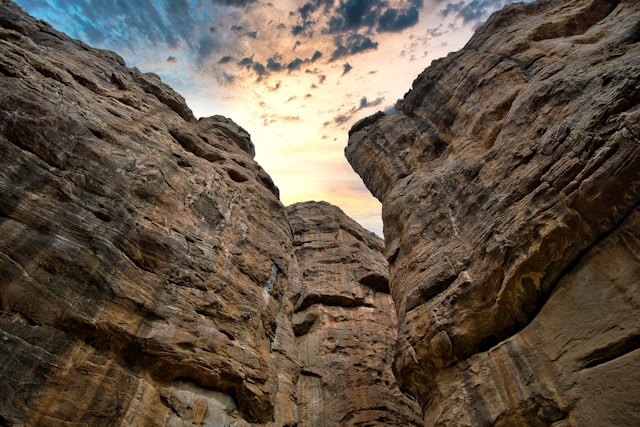
Location: Bagalkot District, Karnataka
Best Time to Visit: November to February
Highlights: Red sandstone carvings, unique Dravidian style, lake views
Nestled amidst rugged red sandstone cliffs, the Badami Cave Temples stand as a testament to the artistic brilliance of the Chalukya dynasty (6th–8th centuries CE). There are four main caves, each dedicated to different deities and faiths — two to Vishnu, one to Shiva, and one to Jain Tirthankaras.
The most striking feature is the Nataraja sculpture in Cave 1, depicting Lord Shiva in 81 dance poses — an exquisite portrayal of rhythm and grace. The ceiling murals, detailed reliefs, and intricate carvings showcase the Chalukyas’ mastery in blending spiritual symbolism with aesthetic beauty.
Overlooking the serene Agastya Lake, the Badami caves offer a perfect combination of spirituality and scenic beauty. As the golden light of sunset paints the cliffs in fiery hues, you’ll understand why this ancient site remains one of South India’s most breathtaking spiritual destinations.
5 Safe Solo Destinations in India for Women
4. Elephanta Caves, Maharashtra – The Island of Shiva’s Power
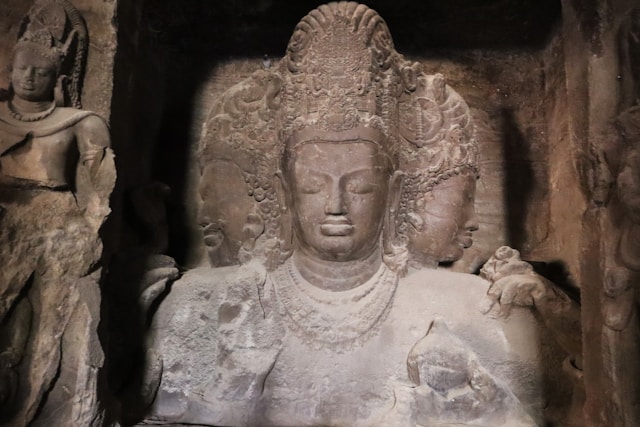
Location: Elephanta Island, near Mumbai
Best Time to Visit: November to February
Highlights: Trimurti sculpture, boat ride from Gateway of India, ancient Shaivism
A short ferry ride from Mumbai’s bustling Gateway of India takes you to the mystical Elephanta Island, home to the famous Elephanta Caves, a UNESCO World Heritage Site dating back to the 5th–8th centuries CE.
Dedicated primarily to Lord Shiva, these rock-cut temples boast majestic sculptures, the most iconic being the Trimurti Sadashiva — a 20-foot-tall, three-faced depiction of Shiva as the Creator, Preserver, and Destroyer. The symmetry, detailing, and emotional power of this sculpture make it one of the greatest icons of Indian art.
Exploring the caves feels like stepping into a world frozen in time. The cool, dark chambers, faint echoes, and divine carvings together create a meditative aura. Despite centuries of erosion and invasion, Elephanta continues to inspire awe among visitors, offering a spiritual escape just minutes away from Mumbai’s chaos.
5. Udayagiri and Khandagiri Caves, Odisha – The Ancient Jain Legacy
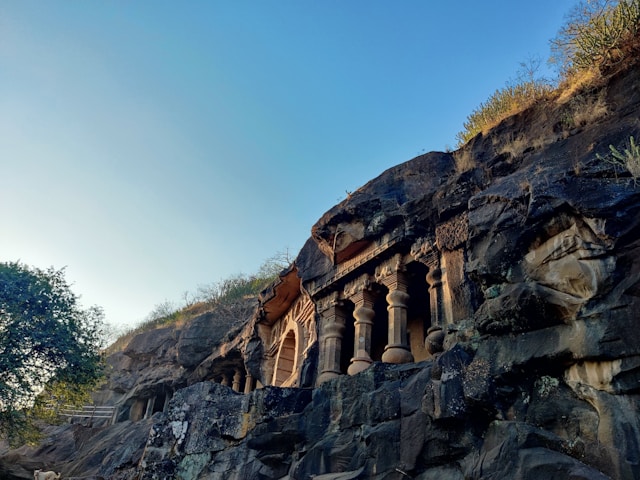
Location: Near Bhubaneswar, Odisha
Best Time to Visit: October to February
Highlights: Jain carvings, inscriptions of King Kharavela, panoramic views
Carved during the 2nd century BCE by the Kalinga king Kharavela, the Udayagiri and Khandagiri Caves are among the earliest examples of India’s rock-cut architecture. These twin hills house a total of 33 caves — 18 in Udayagiri and 15 in Khandagiri, serving as ancient Jain monastic dwellings.
Udayagiri’s Hathi Gumpha (Elephant Cave) is the most famous, with inscriptions narrating the achievements of King Kharavela. Another highlight is the Rani Gumpha, a double-storeyed cave adorned with carvings depicting royal processions, dancers, and divine beings.
The caves overlook the plains of Bhubaneswar, offering panoramic views that add a sense of serenity to the site. Unlike other ornate temples, these caves exude simplicity and humility — reflecting the ascetic ideals of Jainism. For travelers seeking a spiritual retreat infused with history and tranquility, Udayagiri and Khandagiri are perfect.
11 Romantic Gateways Under 5000
6. Kanheri Caves, Maharashtra – The Buddhist Citadel Amidst Nature
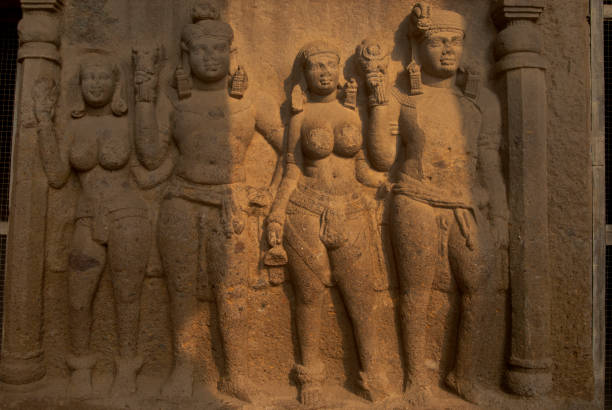
Location: Sanjay Gandhi National Park, Mumbai
Best Time to Visit: October to March
Highlights: Ancient stupas, meditation cells, nature trails
Hidden within the lush greenery of Sanjay Gandhi National Park, the Kanheri Caves are among India’s most extensive Buddhist monastic complexes. Carved between the 1st century BCE and 10th century CE, these 100+ caves once served as meditation retreats and centers of learning for Buddhist monks.
Cave 3, the grand chaitya hall, stands out with its colossal pillars and a 7-meter-tall statue of Buddha. The caves are interconnected by ancient water cisterns and pathways, showing how advanced the monks were in both architecture and environmental planning.
The peaceful setting — surrounded by waterfalls and dense forest — adds to the site’s charm. Despite being located within Mumbai’s boundaries, Kanheri offers a surprisingly serene escape. For those who love both history and hiking, it’s an unbeatable experience that blends spirituality with nature.
7. Undavalli Caves, Andhra Pradesh – The Monolithic Marvel of the South
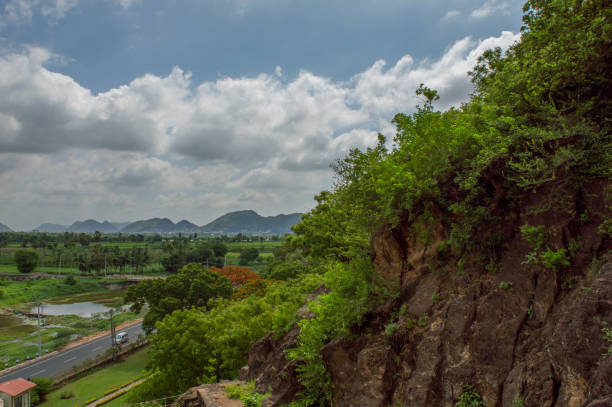
Location: Near Vijayawada, Andhra Pradesh
Best Time to Visit: November to February
Highlights: Giant Vishnu sculpture, monolithic architecture, scenic Krishna River backdrop
Overlooking the tranquil Krishna River, the Undavalli Caves are a stunning example of ancient rock-cut architecture dating back to the 4th–5th centuries CE. Originally associated with Buddhist monks, they were later converted into Hindu shrines dedicated to Lord Vishnu.
The main cave is a four-storeyed structure carved out of solid sandstone, housing a massive reclining statue of Lord Vishnu, sculpted from a single block of granite. The architectural symmetry, spacious halls, and beautifully detailed pillars display the seamless fusion of Gupta and Chalukya styles.
What makes Undavalli truly mind-blowing is how it reflects the transition between Buddhist and Hindu traditions. As you explore its dark corridors and towering chambers, you can sense centuries of devotion echoing through the rock.
The Legacy of Rock-Cut Faith
India’s cave temples are not just monuments — they are living testimonies of faith, endurance, and creativity. Every cave holds a universe of stories: of monks meditating in silence, of kings commissioning temples as acts of devotion, and of artisans chiseling divine visions into lifeless stone.
These sacred spaces also reveal something deeply human — the eternal desire to connect with something larger than oneself. Whether Buddhist, Hindu, or Jain, each cave transcends religious boundaries, offering peace and wonder to anyone who visits.
Travel Tips for Exploring India’s Cave Temples
- Plan During the Cooler Months:
October to March is ideal for exploring most cave sites as temperatures are comfortable. - Hire Local Guides:
Many caves have hidden stories and inscriptions that are best understood through local experts. - Carry a Torch or Headlamp:
Some caves are dimly lit; extra light helps in appreciating carvings and paintings. - Respect the Sanctity:
These are still places of worship for many. Avoid loud noise, flash photography, and touching sculptures. - Stay Hydrated and Comfortable:
Some sites involve moderate climbing or walking, so wear good footwear and carry water.
Conclusion
From the majestic Kailasa Temple of Ellora to the peaceful halls of Kanheri and the ancient serenity of Udayagiri, India’s cave temples are windows into the soul of its civilization. They blend art, architecture, spirituality, and natural beauty in ways few other places on earth can.
For travelers, these sites promise more than just sightseeing — they offer a journey through time, where each carving whispers stories of gods, kings, monks, and artisans who dared to transform mountains into monuments of faith.
So, pack your spirit of adventure, lace up your shoes, and step into the heart of India’s rocky sanctuaries. You’re not just visiting ancient caves — you’re entering timeless realms of devotion and divine imagination.
FAQ on Mind-Blowing Cave Temples in India to Visit
1. What are cave temples, and why are they significant in India?
Cave temples are ancient shrines carved directly into rock faces, hills, or cliffs. They represent the early stages of Indian temple architecture and are a fusion of art, devotion, and engineering brilliance. These temples hold immense historical, spiritual, and cultural significance as they were often sanctuaries for monks, saints, and pilgrims.
2. Which are the most famous cave temples in India?
Some of the most mind-blowing cave temples in India include:
- Ellora Caves (Maharashtra) – Known for the stunning Kailasa Temple, carved from a single rock.
- Ajanta Caves (Maharashtra) – Celebrated for intricate Buddhist paintings and sculptures.
- Elephanta Caves (Maharashtra) – Famous for massive rock-cut Shiva sculptures, especially the Trimurti.
- Badami Caves (Karnataka) – Blending Hindu, Jain, and Buddhist art forms in sandstone cliffs.
- Undavalli Caves (Andhra Pradesh) – Dedicated to Lord Vishnu, showcasing Gupta-era architecture.
- Varaha Cave Temple (Tamil Nadu) – Part of the Mahabalipuram group, known for Pallava craftsmanship.
- Amarnath Cave Temple (Jammu & Kashmir) – A natural cave shrine with an ice Shiva Lingam.
3. Which cave temple is the oldest in India?
The Barabar Caves in Bihar are the oldest known rock-cut caves in India, dating back to the 3rd century BCE during Emperor Ashoka’s reign. These caves were primarily used by Ajivika monks and influenced later Buddhist and Hindu cave architecture.
4. What makes the Ellora Caves so special?
Ellora’s Kailasa Temple (Cave 16) is one of the largest monolithic structures in the world, carved top-down from a single rock. It’s a masterpiece showcasing Hindu mythology, intricate carvings, and perfect proportions, making it one of UNESCO’s most astonishing heritage sites.
5. Are there any Buddhist cave temples in India?
Yes, many! The Ajanta Caves, Karla Caves, Kanheri Caves, and Bhaja Caves are prime examples of Buddhist cave temples featuring monasteries (viharas) and prayer halls (chaityas) with beautiful murals depicting the life of Buddha.
6. Can visitors explore these cave temples today?
Absolutely. Most major cave temple complexes like Ajanta, Ellora, Elephanta, Badami, and Mahabalipuram are open to tourists year-round. However, it’s best to check local timings and seasonal access, as some, like Amarnath, are open only during specific months (July–August).
7. Are there any cave temples with natural formations?
Yes. The Amarnath Cave Temple is a natural wonder, featuring a stalagmite formation believed to represent the Shiva Lingam. Similarly, some caves in Meghalaya and Chhattisgarh have natural rock formations worshipped as divine symbols.
8. What is the best time to visit cave temples in India?
The ideal time to explore cave temples is between October and March, when the weather is pleasant. Avoid monsoons (June–September), as some caves become slippery or waterlogged.
9. Are cave temples suitable for all kinds of travelers?
Yes, though accessibility varies. Sites like Ellora and Badami are traveler-friendly with pathways and signboards, while remote caves like Amarnath or Udayagiri require more physical effort. Spiritual seekers, photographers, historians, and adventure lovers all find them fascinating.
10. What should I wear or carry while visiting cave temples?
- Wear comfortable shoes for uneven terrain.
- Dress modestly as many are active religious sites.
- Carry flashlights, water, and a camera (where permitted).
- Respect the sanctity—avoid touching carvings or graffiti.
11. Which cave temples are UNESCO World Heritage Sites?
- Ajanta Caves (Maharashtra)
- Ellora Caves (Maharashtra)
- Elephanta Caves (Maharashtra)
- Group of Monuments at Mahabalipuram (Tamil Nadu)
These sites are recognized globally for their historical importance and artistic brilliance.
12. Can I take guided tours of these cave temples?
Yes, guided tours are available at major sites like Ajanta–Ellora, Elephanta, and Mahabalipuram. They provide valuable insights into the history, mythology, and architecture behind the carvings.
13. Which cave temples are best for photography?
- Ajanta Caves – For vivid ancient murals.
- Ellora Caves – For grand monolithic sculptures.
- Elephanta Caves – For dramatic light-and-shadow portraits of Shiva.
- Badami Caves – For red sandstone backdrops and temple carvings.
14. Are there any lesser-known cave temples worth visiting?
Yes, hidden gems include:
- Jogeshwari Caves (Mumbai) – Among the largest Hindu cave complexes.
- Pandavleni Caves (Nashik) – Peaceful Buddhist caves with inscriptions.
- Udayagiri and Khandagiri Caves (Odisha) – Jain heritage sites with ancient carvings.
- Gavi Ranganatha Swamy Temple (Karnataka) – A mystical underground shrine.
15. Why should travelers add cave temples to their India itinerary?
Cave temples offer a glimpse into India’s spiritual evolution, architectural mastery, and cultural heritage. They are not just religious sites but living museums that echo stories of devotion, dynasties, and divine craftsmanship.

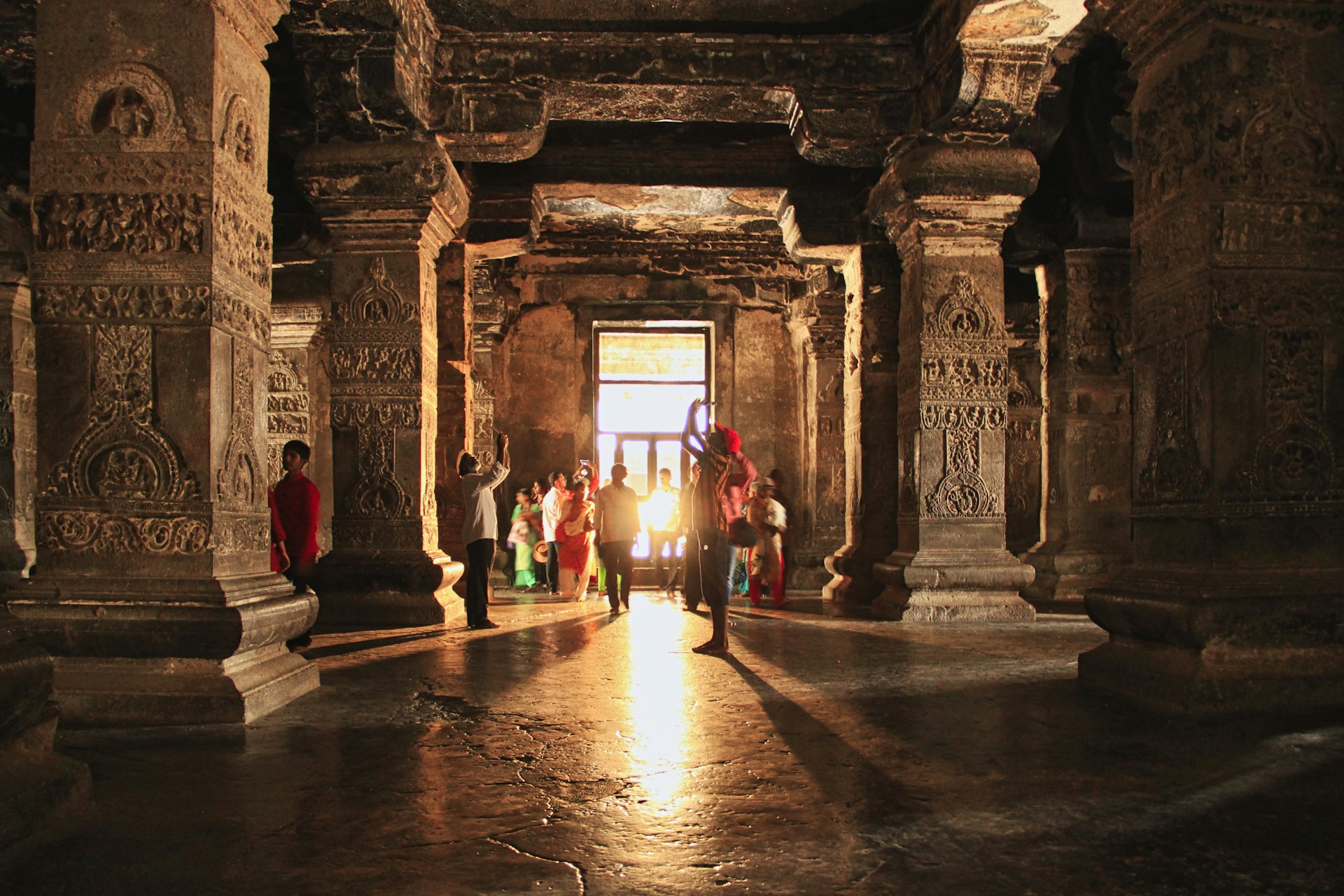
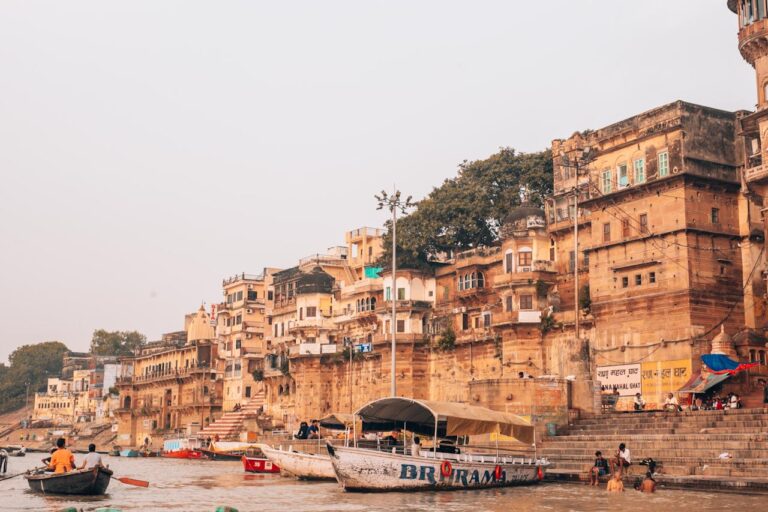
Если планируете поездку в Калининград, крайне советую заранее узнать погоду, так как она кардинально меняется по сезонам. Например, погода в Калининграде в октябре уже не очень теплая, а к зиме стоит приготовиться к ветрам и дождям. Летом же приятно и комфортно, прекрасно для прогулок по прекрасным улицам Калининграда и посещения памятников, таких как кафедральный собор и остров Канта. Развернуто про погоду и активности можно найти здесь отдых на море в прибалтике .
Вместе с классических экскурсионных маршрутов, стоит заглянуть на интересные места — танцующий лес, балтрайон Калининград и деревню викингов, а также поехать на Куршскую косу или изучить музеи в Светлогорске. Для энтузиастов активного отдыха и природы — превосходные пляжи Калининградской области и морская погода Балтийского моря. Не забудьте ознакомиться с расписание дневных органных концертов и расписание экскурсий по фортам, их в городе немало, включая форт 10 и форт 11.